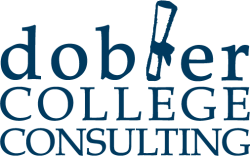Why Some Financial Aid Offers Will Underwhelm
Last week I talked about three things you need to know about the costs of college: your EFC, how admissible your son or daughter is and merit awards. If you missed the post, here it is:
What You Need To Know About The Costs Of College
Today I want to take that conversation a step further and give you an example of why it is so important for a student to know just how desirable he or she is.
When the conversation rolls around to how much aid a college is going to award, sometimes the more desirable a student is plays a significant role. According to NACAC’s 2012 State of College Admission report only 32% of publics and 18% of privates were able to meet 100% of each student’s demonstrated need. The remaining colleges have to decide how to allocate their money and not everyone gets the same amount. If they did, every college would meet 100% of everyone’s need.
And we all know that doesn’t happen.
So what dos end up happening is that colleges have to choose which students get the most aid. To put it simply, the more desirable the student, the more aid they will be awarded. So what makes an applicant more desirable? It depends on the college and while you can’t know everything they are looking for in a given year, there are at least two things any applicant can easily figure out.
GPA and test scores.
Knowing what kind of grades and test scores you will need for admission is something you should seek out about every school you are interested in. You can find this information rather easily on the College Board’s Big Future website. As I talked about in a post I wrote in September called, College List Tip: What Are Your Chances, you will find a range of test scores, GPA’s and even class ranks. This is valuable information for any applicant to look at and understand. These figures are provided by the colleges themselves. They are real numbers and they will show you just who the college thinks is desirable and, therefore, who will receive the more generous aid awards. Applicants should read them and understand them as they search for colleges.
There’s a big difference between a college A where SAT scores for Math and Critical Reading of 500 fall in the top 25th percentile and college B where those same scores fall in the lowest 25th percentile.
If an applicant has fallen in love with college B and is expecting a lot of aid, they are very likely going to be disappointed.
Have something to say? Use the comment box below or email me at eric@doblercollegeconsulting.com. If you think this makes a lot of sense, consider sharing it with someone you know.





